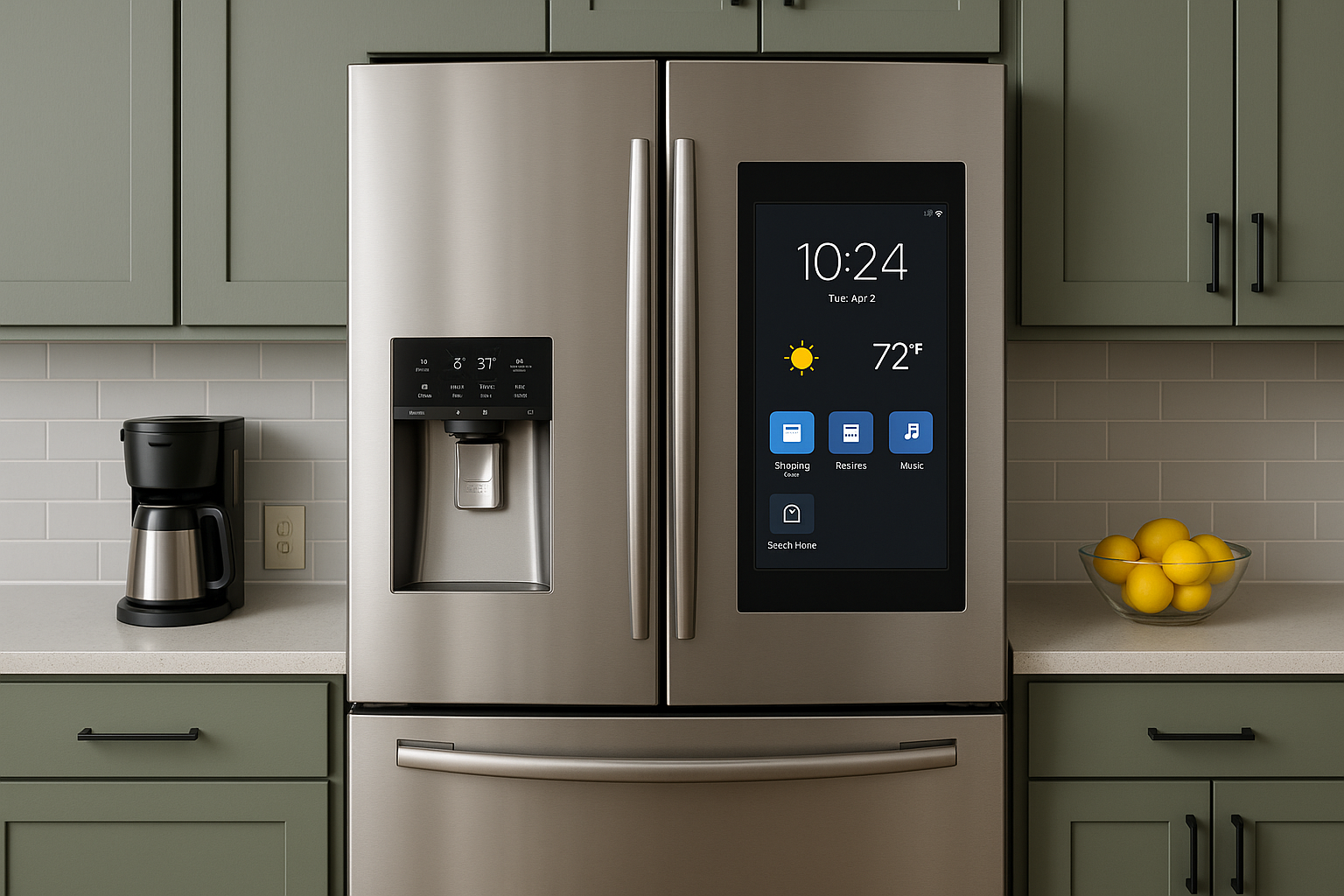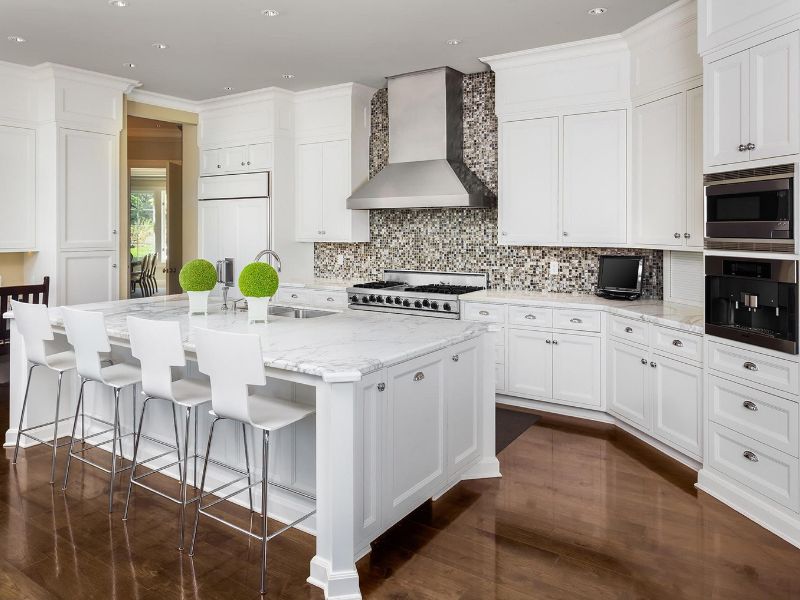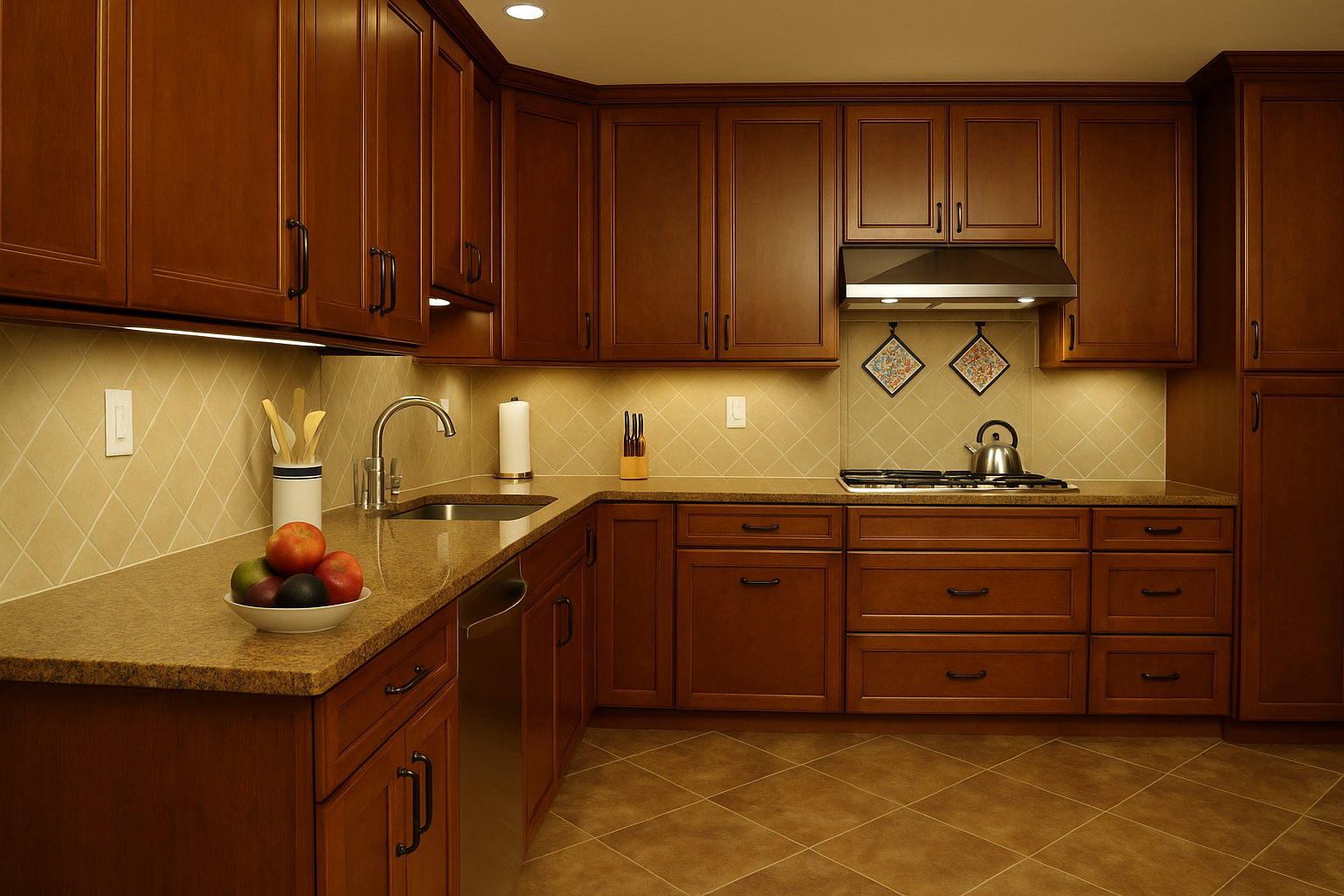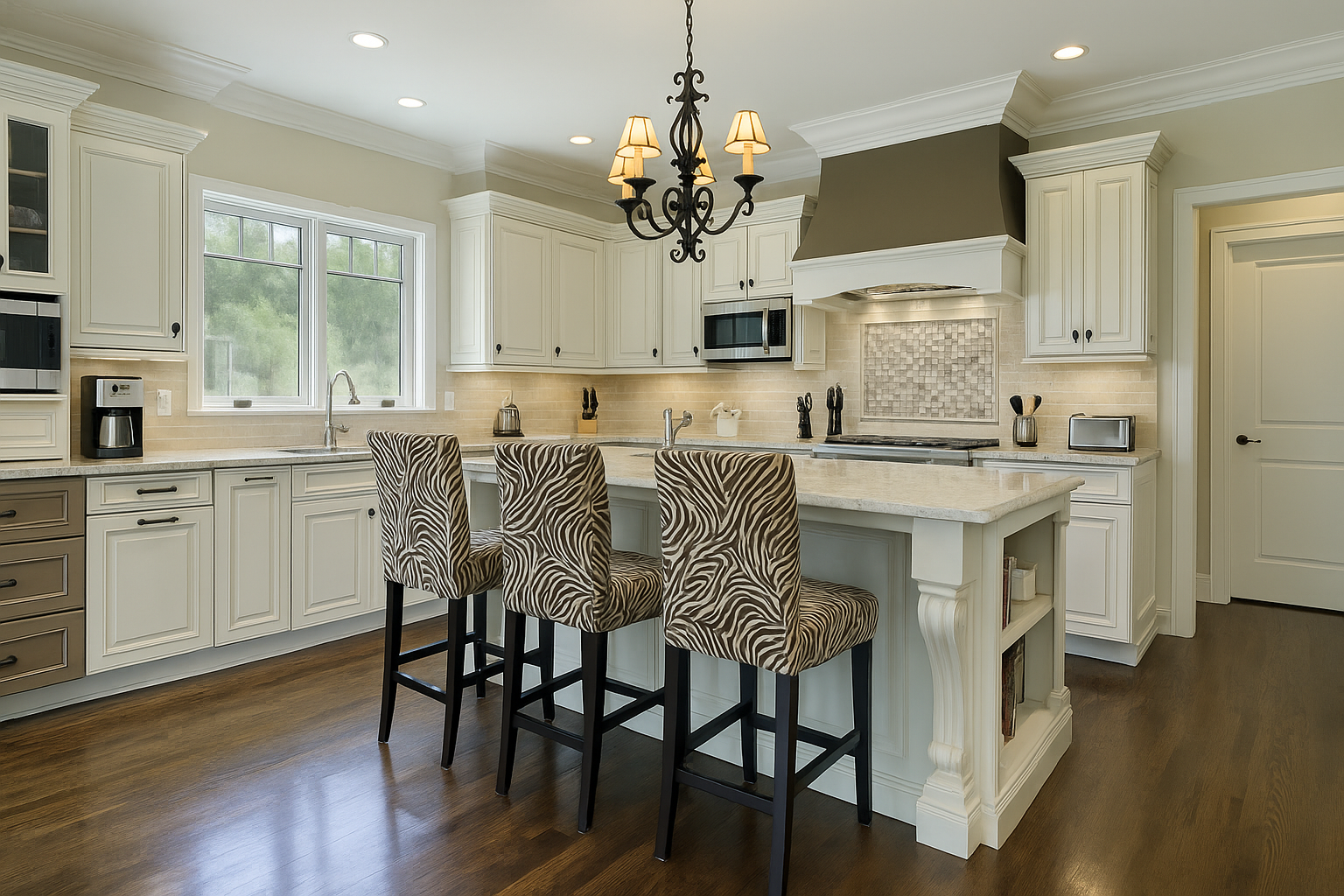Navigate the world of kitchen appliances with confidence. From refrigerators to ranges, learn how to choose the perfect appliances for your Tulsa kitchen renovation.
The Importance of Appliance Selection
Kitchen appliances represent both a significant investment and the functional heart of your kitchen. Choosing the right appliances for your Tulsa home involves balancing performance, efficiency, style, and budget considerations. With proper selection, your appliances will serve your family reliably for 10-20 years while enhancing your daily cooking and entertaining experiences.
This comprehensive guide covers everything you need to know about selecting kitchen appliances for your renovation, from understanding different appliance types to navigating brands, features, and sizing considerations specific to Tulsa homes.
Planning Your Appliance Package
Essential Kitchen Appliances
Most kitchen renovations include these core appliances:
- Refrigerator: The largest and most used appliance
- Range or Cooktop/Oven: Primary cooking appliances
- Dishwasher: Essential for modern convenience
- Microwave: Versatile for reheating and quick cooking
- Range hood or ventilation: Removes cooking odors and smoke
Budget Considerations
Appliance packages typically cost:
- Budget package: $2,500-4,500 (basic models)
- Mid-range package: $4,500-8,500 (stainless steel, more features)
- High-end package: $8,500-20,000+ (premium brands, professional features)
- Luxury package: $20,000+ (top-tier brands and features)
Refrigerator Selection
Refrigerator Styles
Choose the configuration that best fits your needs:
French Door Refrigerators
- Pros: Popular style, wide refrigerator access, freezer drawer
- Cons: More expensive, freezer requires bending
- Best for: Families who use fresh foods more than frozen
- Price range: $1,200-4,000+
Side-by-Side Refrigerators
- Pros: Easy access to both sections, fits narrow spaces
- Cons: Narrow door openings, limited wide item storage
- Best for: Narrow kitchens, equal fresh/frozen usage
- Price range: $800-2,500
Top-Freezer Refrigerators
- Pros: Most affordable, energy efficient, reliable
- Cons: Basic features, freezer requires reaching up
- Best for: Budget-conscious buyers, smaller kitchens
- Price range: $400-1,200
Bottom-Freezer Refrigerators
- Pros: Fresh food at eye level, energy efficient
- Cons: Freezer requires bending, fewer features
- Best for: Those who rarely use frozen foods
- Price range: $700-2,000
Sizing Considerations
Standard refrigerator widths and their typical uses:
- 30 inches: Small families, compact kitchens
- 33 inches: Most common size, good for average families
- 36 inches: Large families, serious cooks
- 42-48 inches: Built-in models, luxury kitchens
Key Features to Consider
- Energy Star certification: Important for Oklahoma's climate
- Water and ice dispensers: Convenience vs. maintenance
- Adjustable shelving: Flexibility for different items
- Temperature zones: Specialized storage areas
- Smart features: WiFi connectivity, app control
Range and Cooking Appliance Selection
Range vs. Separate Cooktop and Oven
Ranges (Combined Units)
- Pros: Cost-effective, space-saving, easier installation
- Cons: Limited design flexibility, simultaneous use issues
- Price range: $500-5,000+
Separate Cooktop and Wall Oven
- Pros: Design flexibility, ergonomic oven placement, simultaneous use
- Cons: More expensive, requires more cabinet space
- Price range: $1,200-8,000+ combined
Fuel Types
Gas Cooking
- Pros: Instant heat control, works during power outages, preferred by chefs
- Cons: Requires gas line, indoor air quality concerns
- Best for: Serious cooks, areas with reliable gas service
Electric Cooking
- Pros: Even heating, easier to clean, generally less expensive
- Cons: Slower temperature changes, doesn't work in power outages
- Best for: Homes without gas lines, baking enthusiasts
Induction Cooking
- Pros: Fastest heating, most energy efficient, precise control
- Cons: Requires compatible cookware, higher upfront cost
- Best for: Tech-savvy cooks, energy-conscious homeowners
Range Sizes and Configurations
- 30 inches: Standard size for most kitchens
- 36 inches: More cooking space, professional appearance
- 48+ inches: Professional ranges for serious cooks
Dishwasher Selection
Dishwasher Types
Built-in Dishwashers
- Standard built-in: Most common, 24-inch width
- Compact built-in: 18-inch width for smaller kitchens
- Drawer dishwashers: Two independent drawers, flexible loading
- Panel-ready: Accept custom panels to match cabinetry
Performance Features
- Wash cycles: More options for different soil levels
- Noise level: Look for 44 dB or lower for quiet operation
- Energy efficiency: Energy Star models save water and energy
- Rack configuration: Adjustable racks for flexibility
- Third rack: Additional space for utensils and small items
Dishwasher Price Ranges
- Basic models: $300-600
- Mid-range models: $600-1,200
- High-end models: $1,200-2,500+
Microwave Selection
Microwave Types and Installation
Over-the-Range Microwaves
- Pros: Space-saving, includes ventilation, common choice
- Cons: Limited ventilation power, high installation
- Price range: $150-800
Built-in Microwaves
- Pros: Seamless appearance, flexible placement, powerful ventilation separate
- Cons: More expensive installation, requires cabinet space
- Price range: $400-1,500+
Countertop Microwaves
- Pros: Least expensive, easy replacement, portable
- Cons: Uses counter space, less integrated appearance
- Price range: $80-400
Microwave Drawers
- Pros: Unique design, ergonomic access, high-end appearance
- Cons: Very expensive, limited brand options
- Price range: $1,200-2,000+
Ventilation Systems
Range Hood Types
Under-Cabinet Range Hoods
- Pros: Space-efficient, affordable, easy installation
- Cons: Limited power, basic appearance
- Price range: $100-600
Wall-Mount Range Hoods
- Pros: More powerful, better capture, design statement
- Cons: More expensive, requires wall mounting
- Price range: $300-2,000+
Island Range Hoods
- Pros: Powerful ventilation, dramatic design element
- Cons: Most expensive, complex installation
- Price range: $500-3,000+
Ventilation Performance
- CFM rating: 300-400 CFM for most home cooking
- Noise level: Look for quiet operation (under 65 dB)
- Duct vs. ductless: Ducted systems more effective
- Variable speeds: Multiple fan speeds for different cooking
Appliance Brands and Reliability
Budget-Friendly Brands
- Whirlpool: Reliable, good value, wide availability
- GE: Traditional American brand, solid performance
- Frigidaire: Good basic features, affordable pricing
- Amana: Budget-focused, simple operation
Mid-Range Brands
- KitchenAid: Good performance, attractive designs
- Samsung: Modern features, sleek designs
- LG: Innovation-focused, energy efficient
- Maytag: Durability-focused, dependable
Premium Brands
- Bosch: Quiet operation, European engineering
- Miele: Exceptional quality, long warranties
- SubZero/Wolf: Professional performance, luxury status
- Thermador: High-end cooking performance
Energy Efficiency Considerations
Energy Star Certification
Look for Energy Star ratings, especially important in Tulsa's climate:
- Refrigerators: Can save $300+ over lifetime
- Dishwashers: Use less water and energy
- Ranges: Induction models most efficient
- Overall savings: 10-30% lower utility bills
Oklahoma Utility Considerations
- Natural gas availability: Most Tulsa areas have gas service
- Electric rates: Consider time-of-use pricing
- Peak demand: Summer cooling costs are highest
- Rebates: Check for local utility rebates
Smart Appliance Features
Connected Appliance Benefits
- Remote monitoring: Check status from anywhere
- Maintenance alerts: Proactive service reminders
- Recipe integration: Guided cooking experiences
- Energy monitoring: Track usage and costs
- Voice control: Integration with smart home systems
Popular Smart Features
- WiFi connectivity: App control and monitoring
- Voice control: Alexa and Google Assistant integration
- Internal cameras: See inside refrigerator remotely
- Automatic cooking: Sensor-based cooking programs
- Diagnostic systems: Self-troubleshooting capabilities
Appliance Sizing and Space Planning
Standard Appliance Dimensions
Refrigerator Dimensions:
- Height: 67-70 inches (standard ceiling height)
- Width: 30-48 inches (varies by style)
- Depth: 29-35 inches (counter-depth vs. standard)
Range Dimensions:
- Height: 36 inches (standard counter height)
- Width: 30, 36, or 48 inches
- Depth: 25-27 inches
Dishwasher Dimensions:
- Height: 34 inches (adjustable feet)
- Width: 24 inches (18 inches for compact)
- Depth: 24 inches
Clearance Requirements
- Refrigerator: 1 inch on sides, 2 inches on top
- Range: 30 inches to combustible surfaces above
- Dishwasher: Access to water, drain, and electrical
- Ventilation: Proper ductwork routing
Delivery and Installation
Delivery Considerations
- Measure doorways: Ensure appliances fit through entry points
- Stair access: Consider alternative delivery routes
- Old appliance removal: Arrange disposal of existing units
- Timing coordination: Align with renovation schedule
Installation Requirements
- Electrical work: May need new circuits or outlets
- Plumbing connections: Water lines for refrigerators and dishwashers
- Gas connections: Licensed technician required
- Ventilation ducting: Range hood installation
Warranty and Service Considerations
Warranty Coverage
- Standard warranties: 1-2 years parts and labor
- Extended warranties: Consider for expensive appliances
- Component warranties: Compressors often have longer coverage
- Registration requirements: Register for full warranty protection
Service Availability in Tulsa
- Authorized service centers: Check local availability
- Parts availability: Common brands have better support
- Response times: Consider service network quality
- Maintenance requirements: Some brands need more frequent service
Appliance Shopping Tips
When to Buy
- Best sales periods: September-October, January, Memorial Day
- Model year transitions: Spring clearance sales
- Holiday weekends: Memorial Day, Labor Day, Black Friday
- New home shows: Special pricing events
Where to Shop in Tulsa
- Big box stores: Competitive pricing, wide selection
- Appliance specialty stores: Expert advice, better service
- Kitchen and bath showrooms: Design integration services
- Online retailers: Often best prices, but consider delivery
Negotiation Tips
- Package deals: Buy multiple appliances for discounts
- Floor models: Slight discounts on display units
- Delivery and installation: Often negotiable
- Extended warranties: May be included in negotiations
Common Appliance Selection Mistakes
Sizing Mistakes
- Refrigerator too large: Overwhelms kitchen design
- Range too small: Insufficient cooking capacity
- Inadequate ventilation: Insufficient CFM for cooking style
- Clearance issues: Not accounting for door swings
Feature Mistakes
- Over-buying features: Paying for unused capabilities
- Under-buying quality: Cheap appliances cost more long-term
- Ignoring efficiency: Higher operating costs
- Style mismatches: Appliances don't coordinate
Conclusion: Making Smart Appliance Choices
Selecting the right appliances for your Tulsa kitchen renovation requires careful consideration of your cooking habits, family size, energy efficiency needs, and budget. Take time to research options, visit showrooms, and understand the long-term implications of your choices.
Remember that appliances are a long-term investment that will impact your daily life for many years. Focus on reliability, efficiency, and features that truly enhance your cooking and kitchen experience rather than just following trends.
Ready to select appliances for your kitchen renovation? Our team at Shepherd Construction can help you navigate the appliance selection process and coordinate installation with your renovation timeline. Contact us to discuss your appliance needs and ensure seamless integration with your new kitchen design.




